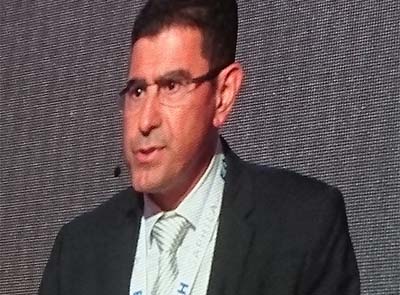Kathy Gibson at Saphila 2017 in Sun City – By 2025, we will live in a networked intelligent world – but this will only happen if existing IT systems are fundamentally changed.
Raphael Perez, vice-president: SAP Leonardo EMEA, believes new technologies will lead to a new digital value chain that will be defined by automated and accelerated process flowing to shorter delivery time from order processing to delivery.
A series of interlinked networks will work together to enable this system of intelligence, he says.
“The value is in the data,” he says. “When companies have systems or reports and are able to deliver applications they create the layer that will improve value creation between customers and their ecosystems.”
Organisations won’t be able to change all of their existing systems of record, though. Rather, they need to add a new layer of intelligence, Perez says.
SAP has introduced its Leonardo platform that will help companies to do this. “Every application will be able to connect data from every connected device and add to the process,” he says.
Surveys show that 72% of CEOs believe the next three years will be more critical for their industry that the last 50 years.
Companies with 50% or more of their revenues from digital ecosystems achieve 32% higher revenue growth and 27% higher profit margins.
Meanwhile, only 5% of organisations feel that they have mastered digital to the point of differentiation from their competitors.
“This is why SAP Leonardo is not just technology proposition, but we work with the partner channel to bring a full solution,” Perez says.
Digital transformation and emerging systems of intelligence is about intelligently connecting people, things and business – and SAP Leonardo enables this, Perez says.
SAP Leonardo technologies bring design thinking to system development – from solution ideation and vision to rapid prototyping, to business case development and technology blueprint.
“We bring this together in a way that is satisfying to customers,” Perez says.
The SAP Cloud Platform brings microservices, open APIs, flexible runtimes and integration to the party, and Leonardo builds on this.
SAP Leonardo helps customers to bring new and innovative solutions to life that help to connect systems of record to systems of intelligence. Some examples include chatbots, conversational user interfaces, or data aggregation services.
“We want to help customers to innovate – not as a separate process, but by integrating existing systems with this intelligence layer,” Perez says.
SAP Leonardo will help companies to innovate, integrate and scale.
Innovation will be enabled by new capabilities that include machine learning, big data, analytics and IoT on the SAP Cloud Platform.
Integration is about modular capabilities that are easy to buy, deploy and consume, that are open and extensive with rich APIs.
Scalability is about running these systems of innovation across the core and digital business environments.
Perez explains that SAP Leonardo enables a virtuous cycle in innovation, building on SAP Cloud Platform and SAP HANA to turn systems of record into systems of intelligence.
The go-to-market for SAP Leonardo will be via an industry accelerator packages, bundles of services and solutions for each industry, containing the necessary expertise, data and software integration tools.
To help customers with solution ideation, the company will set up global SAP Leonardo Centres for Design Thinking and Innovation. By the end of 2018, SAP aims to have 25 of these centres operational around the world.

